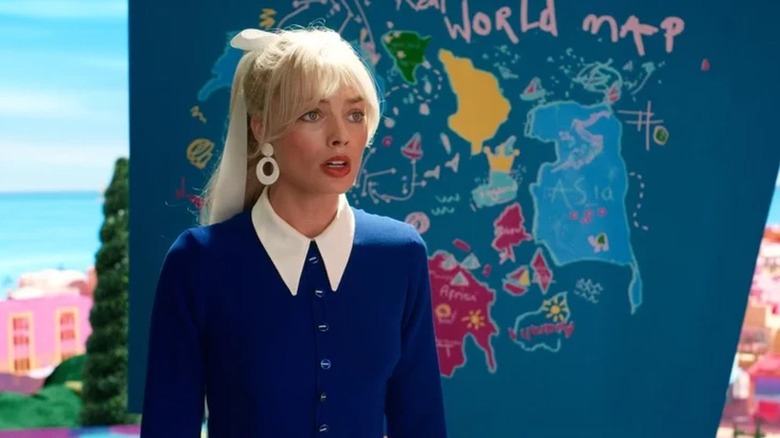In a global movie marketplace, films can be banned from select countries for split-second moments. Disney’s live-action 2017 adaptation of “Beauty and the Beast,” for example, was restricted from playing in both Kuwait and a city in Alabama due to a blink-and-you’ll-miss-it shot of two men dancing, while Pixar’s “Lightyear” ended up banned in 14 countries due to a shot of two women sharing a brief, chaste queer kiss. Institutional homophobia unfortunately isn’t new or surprising, but plenty of movies have also been banned for other reasons ranging from depictions of time travel (in the case of “Back to the Future”) to “The Da Vinci Code” and its exploration of Christian apocrypha.
What’s ban-worthy in one country may not even be noticeable in another, as is the case with the prop choice that led to the Tom Holland-starring “Uncharted” being banned in Vietnam and the Philippines. Ruben Fleischer’s adaptation of the popular adventure video game franchise was a box office hit upon release, and despite its not-so-great critical reception (/Film’s review called it “a reanimated husk of better action-adventure movies before it”), the film made plenty of money outside the U.S. Yet, thanks to a controversial map design featured in the movie, its overseas commercial returns were restricted and it barely saw the light of day in some countries.
An image of a map in Uncharted proved controversial
As Variety reported at the time, a map in one scene of “Uncharted” included what’s been called the “nine-dash line.” Essentially, it’s a line displayed in the South Asian Sea on some maps, and it implies that China has control over islands in the area, including the Paracel Islands, Spratly Islands, and more. As the outlet points out, the area is a disputed shipping and resource route, and other nations including Vietnam, Taiwan, Indonesia, Malaysia, and the Philippines, have claimed sections of the map captured within the nine-dash line area, too. Issues surrounding ownership of the islands and area have historically been so heated that when the image popped up in “Uncharted,” Vietnam News Agency reported that it was “an illegal image,” per Variety.
“Uncharted” was banned in Vietnam, and though it was initially released in the Philippines, it was banned later in its theatrical run according to reporting by PhilStar. The country’s Department of Foreign Affairs and Movie and Television Review and Classification Board cited a 2016 ruling from a UN-backed tribunal that determined that China’s claim to the area wasn’t valid in their reasoning for pulling the movie. The movie rating group ordered Columbia Pictures to cease and desist showing the movie unless the scene, which appears in the film’s trailer, was removed.
The same thing happened to Barbie a year later
Oddly, “Uncharted” wasn’t the first nor the last film to be banned for including a nine-dash line map. A handful of otherwise innocuous movies and shows, including DreamWorks’ “Abominable” and Warner Bros’ hugely successful “Barbie,” caused controversy due to their inclusion of maps that appeared to include the nine-dash line. “The map in Barbie Land is a child-like crayon drawing. The doodles depict Barbie’s make-believe journey from Barbie Land to the ‘real world,'” a studio rep said in a statement when Vietnam banned “Barbie” in 2023. “It was not intended to make any type of statement.”
It seems likely that most of these incidents were accidents, with prop department teams or animators using maps as reference points that they may not have realized included the controversial border demarcation. Still, as small as these moments may be, they resonate to the people who live in the contested areas. Yet, the movies’ censorship has repercussions, too. “Maps are political, and borders often bear historical wounds,” Article 19’s Michael Caster told Voice of America after the “Barbie” ban. “But rather than ensuring free and open discussion, the knee jerk response to censor seldom supports historical or transitional justice.” And to think, we all thought the biggest problem with “Uncharted” was all the quips.
This post was originally published on here









